Salt instead of chemicals for cleaning the pool - truth or myth?
“For 10 years now I have been pouring salt into the pool to prevent the water from blooming. Swimming in salt water is more pleasant than swimming in chlorine.” These kinds of comments are often found on the Internet. But what salt to use and how to do it correctly?
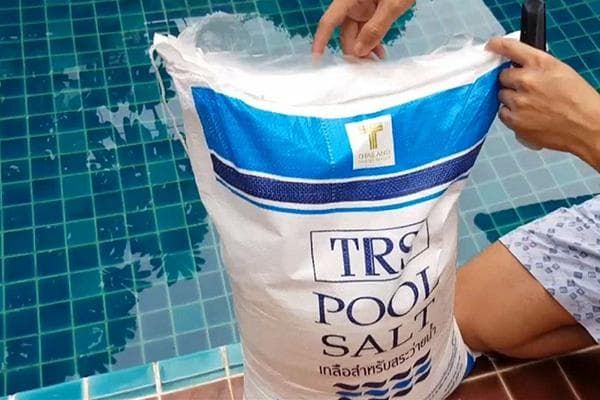
Purifying pool water with salt - myths and reality
Many people have heard that NaCl has disinfectant properties. It is used as a folk remedy for cleaning surfaces and removing stains from fabrics. This is partly where the myth arose that ordinary salt can save you from algal blooms. In reality, all you will get is slightly brackish water. It will turn green no slower than usual.
For salt cleaning to work, you need a chlorine generator. This is a device that allows you to produce sodium hypochlorite in salt water. It consists of a chamber - an electrolyzer - and a control panel. When an aqueous solution of sodium chloride interacts with an alkali in a chlorine generator, chlorine and oxygen are released at the anode, and hydrogen and OH ions are released at the cathode—. When entering the electrolyte volume, a reaction with chlorine occurs and a solution of active chlorine ClO is formed—.
Is sea water in a pool a myth?
Many manufacturers of chlorine generators use the enticing names “Sea Water” in their names. And in product descriptions you can often see “water that is disinfected with a chlorine generator becomes like sea water.” Well, why go to the sea after that if you can improve your health by swimming in your home pool at your dacha?
But the reality is that when we add regular salt, we just get lightly salted water with sodium chloride. Sea water contains about 15 useful minerals. There are significantly fewer of them in sea salt, not to mention food salt, which at best is enriched with iodine.
Now to the question of how much sea salt is needed to obtain “healing water”. We know that in the Black Sea the concentration of NaCl is 19 g per 1 liter, and in the Mediterranean - 35 g. Let's take the average value and calculate: 25 g multiplied by 1000 liters (cube of water). Total - 25 kg for each cube, or 250 kg of salt for a pool of 10 cubes. And everything would be fine, but in such a solution the chlorine generator will not work and will give error 92, meaning that there is too much salt. As a result, you will receive water similar in composition to sea water, but it will bloom just as quickly as river water.
What salt is needed to clean a pool and how to calculate the required amount?
Now we have smoothly moved on to the question of what salt is needed for the correct operation of the chlorine generator. The answer is that it contains the maximum amount of sodium chloride without foreign impurities. This is no longer table salt or sea salt, as many believe, but rock or industrial salt.
Industrial salt is sold in specialized stores that sell equipment for swimming pools. Most often this is tableted salt in bags. One 25 kg bag costs about 550 rubles. The recommended concentration of NaCl is 3–4 g per 1 liter. Many manufacturers provide exact dosages in tables.
"Intex" indicates the following information:
| Pool view | Size | Volume of water when filled to 80–90%, m3 | Amount of salt for starting, kg |
|---|---|---|---|
| Frame round | 15' x 36" | 11.8 | 35 |
| 15' x 42" | 13.8 | 40 | |
| 15' x 48" | 15.9 | 45 | |
| 18' x 48" | 23.8 | 70 | |
| 24' x 48" | 42.4 | 130 | |
| Easy set | 15' x 36" | 9.7 | 30 |
| 15' x 42" | 11.8 | 35 | |
| 15' x 48" | 14.4 | 45 | |
| 16' x 42" | 14 | 40 | |
| 16' x 48" | 15.6 | 45 | |
| 18' x 42" | 18.2 | 55 | |
| 18' x 48" | 21.1 | 65 | |
| Rectangular frame | 12' x 24' x 48" | 29.3 | 90 |
| 12' x 20' x 48" | 16.3 | 50 | |
| Oval frame | 12' x 24' x 48" | 20.5 | 60 |
| 12' x 32' x 48" | 28.8 | 85 | |
| 12' x 42' x 48" | 37.2 | 110 |
Instructions for use
To carry out disinfection, salt must be added to the pool once. Then the chlorine generator uses it again and again. It doesn't evaporate. You can remove salt only by draining the water.
How to clean a pool using salt and a chlorine generator:
- Turn on the pump to circulate water in the pool.
- Distribute the required amount of salt evenly around the perimeter of the pool (see table).
- Swim in the pool or brush along the bottom to dissolve quickly.
- After a day, turn on the chlorine generator for 2–8 hours (depending on the size of the pool).
If the water in the pool has already turned green, then on average it takes 5 days to clean it.
Advantages and disadvantages of salt cleaning
The main advantage of using a chlorine generator is its high bactericidal efficiency with a minimum of side effects.
Having invested in equipment and the purchase of salt once, the pool owner receives:
- Increased comfort. The water in the pool does not emit a chemical odor and becomes soft. Even with prolonged contact, the skin and hair do not become dry. When diving, the eyes do not turn red, even if they are opened under water.
- Long-term protection against algal blooms. Chlorine produced from salt water destroys algae, bacteria, and fungi. As a result, it remains clean and transparent throughout the entire swim season.
- Ease of use and maintenance. With a chlorine generator, you can forget about using chemicals every 1-2 weeks. Until the water is drained, it will be enough to turn the device on and off every day. It will keep the chlorine concentration at a safe but effective level.
- Ideal for young children and allergy sufferers. Using salt instead of chemicals eliminates the possibility of allergic reactions. Salt water, unlike chlorinated water, does not cause irritation of the mucous membranes, intestinal disorders or other problems.
Well, now let's move on to the cons:
- Considerable investment. Buying a chlorine generator is an additional expense. Inexpensive models are connected to a filter pump, which should be quite powerful (from 2650 l/h). Otherwise, you will have to buy an expensive model complete with a sand filter. This does not include the cost of salt, which will need a lot - 30 kg or more.
- You won't be able to give up chemistry completely. When operating a chlorine generator, the pH balance is disrupted. Therefore, you will have to periodically use drugs to level it.
Questions and answers
How much does a chlorine generator cost?
The price of chlorine generators starts from 8,000 rubles. (Intex 26668). Intex 54606 models costing 12,000 rubles are very popular. and Aquaviva SSC-mini for 60,000 rubles.
Is it possible to add regular table salt to water?
No. Table salt, in addition to sodium chloride, contains anti-caking agents and other microelements, which fall as a dense sediment to the bottom of the pool. And the presence of iodine can lead to equipment failure.
Installing a pool on your property is not as expensive as maintaining it. There is no magic pill that can get rid of flowering and plaque formation once and for all. Fighting for the purity and transparency of water can only be achieved through a set of measures. For a pool at your dacha, you can purchase a chlorine generator and tablets to lower the pH. You can use an ozonator, chlorine tablets or other alternative means. There are a lot of options.
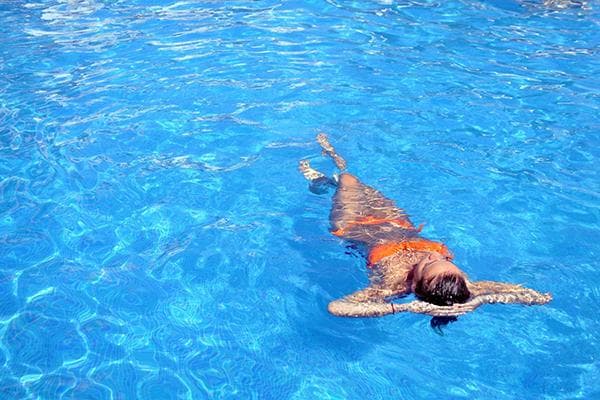
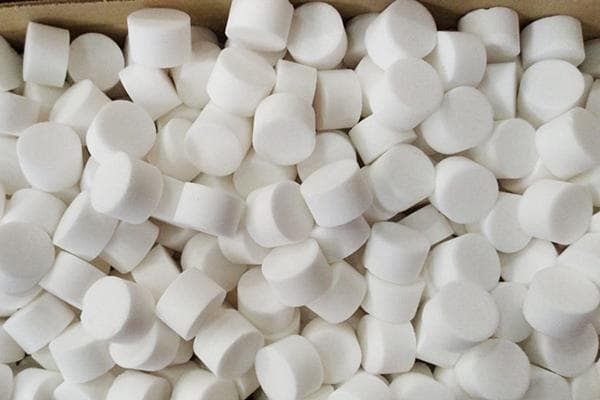

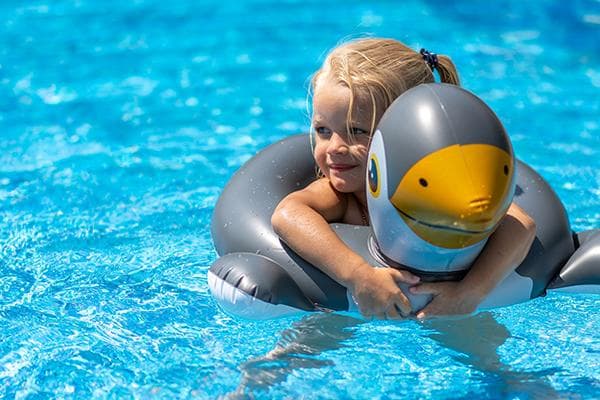
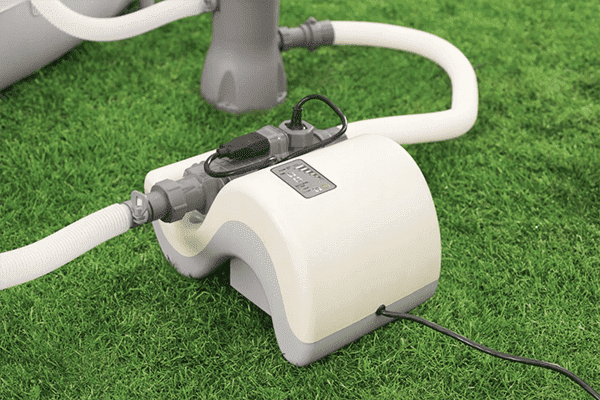
The pool has turned green, what should I do?